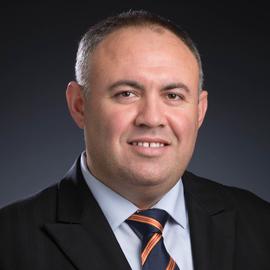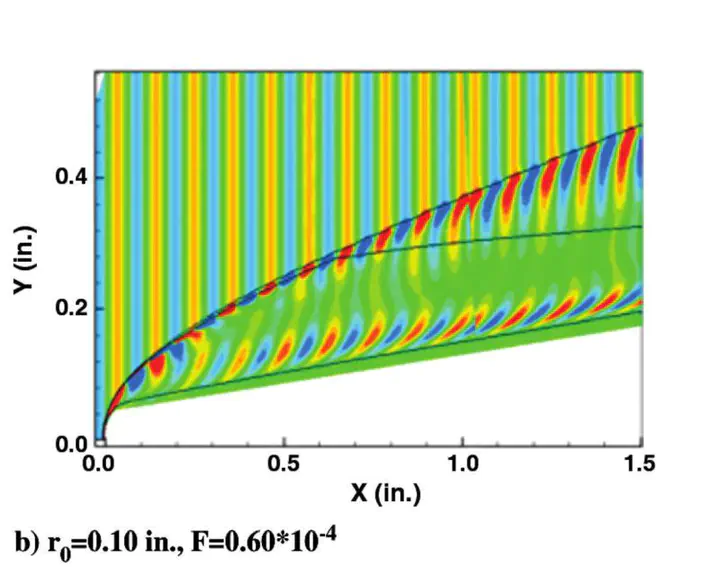Effects of Nose Bluntness on Hypersonic Boundary-Layer Receptivity and Stability over Cones
Kursat Kara, Ponnampalam Balakumar, Osama A. Kandil
December, 2011
Abstract
The receptivity to freestream acoustic disturbances and the stability properties of hypersonic boundary layers are numerically investigated for boundary-layer flows over a 5-degree straight cone at a freestream Mach number of 6.0. To compute the shock and the interaction of the shock with the instability waves, the Navier-Stokes equations in axisymmetric coordinates were solved. In the governing equations, inviscid and viscous flux vectors are discretized using a fifth-order accurate weighted-essentially-non-oscillatory scheme. A third-order accurate total-variationdiminishing Runge-Kutta scheme is employed for time integration. After the mean flow field is computed, disturbances are introduced at the upstream end of the computational domain. The appearance of instability waves near the nose region and the receptivity of the boundary layer with respect to slow mode acoustic waves are investigated. Computations confirm the stabilizing effect of nose bluntness and the role of the entropy layer in the delay of boundary-layer transition. The current solutions, compared with experimental observations and other computational results, exhibit good agreement.

Kursat Kara
Associate Professor, Mechanical and Aerospace Engineering
Kursat Kara is an Associate Professor of Mechanical and Aerospace Engineering at Oklahoma State University and principal investigator of the Kara Aerodynamics Research Laboratory. His research spans hypersonic boundary-layer physics, unsteady aerodynamics, and the emerging interface of quantum computing and fluid dynamics. A dedicated educator and mentor, he teaches core and advanced courses—including Fundamentals of Aerodynamics, Computational Fluid Dynamics, Boundary-Layer Theory and Transition, and Quantum Computing—and supervises graduate and undergraduate projects in high-fidelity simulation and data-driven modeling. His work has been funded by NASA, NSF, Oklahoma NASA-EPSCoR, NAVAIR, ANSYS, and IBM Quantum. In 2025, he received the CEAT Excellent Faculty Award and was nominated for both the 2024 Excellent Teacher Award and the 2025 Excellent Faculty Award by OSU’s School of Mechanical and Aerospace Engineering. Dr. Kara earned his Ph.D. from Old Dominion University with a dissertation on hypersonic boundary layer receptivity to acoustic disturbances. He began his career as a research engineer at New England Analytics (supporting Sikorsky Aircraft), then completed a post-doctoral appointment at Penn State in hot jet simulations for aeroacoustics. In 2010, he helped establish the Aerospace Engineering Department at Khalifa University—where he won the President’s Faculty Excellence Award for Outstanding Teaching in 2015—before joining OSU. An active member of AIAA and APS, he served on the AIAA Applied Aerodynamics Technical Committee (2012–2021) and chaired/co-chaired multiple AIAA conferences. He also sits on the editorial board of Nature Scientific Reports and guest-edits its Quantum Computing collection.
